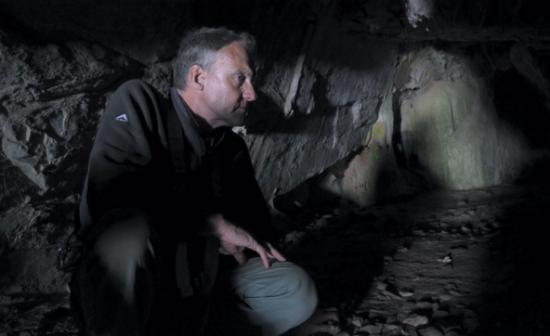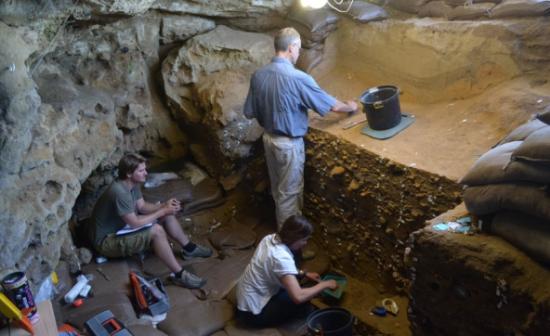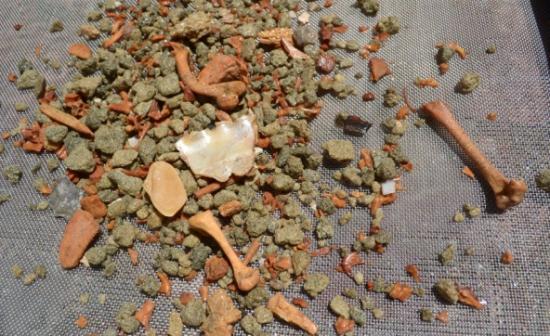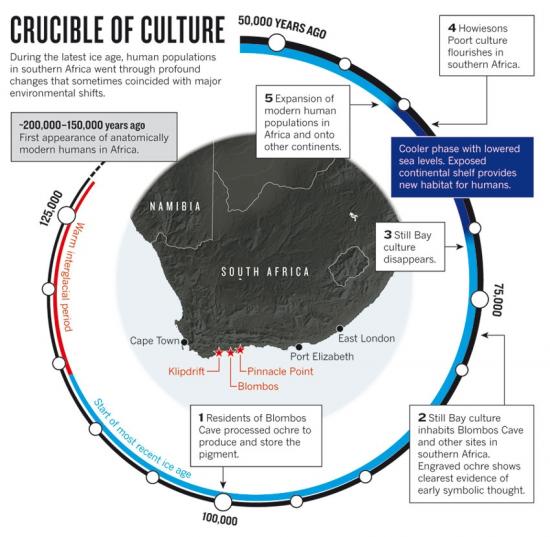Human evolution: Cultural roots
A South African archaeologist digs into his own past to seek connections between climate change and human development.
Jeff Tollefson
Source - http://www.nature.com/news/human-evolution-cultural-roots-1.10025

Archaeologist Chris Henshilwood explores a cave on South Africa's Southern Cape. At nearby Blombos cave, Henshilwood has found some of the oldest evidence of symbolic thought by humans. J. TOLLEFSON
Metal scrapes on hard sand as archaeologist Chris Henshilwood shaves away the top layer of sediment in Blombos Cave. After just a few moments, the tip of his trowel unearths the humerus of a pint-sized tortoise that walked the Southern Cape of South Africa many millennia ago. Next come shells from local mussels and snails amid blackened soil and bits of charred wood, all remnants of an ancient feast. It was one of many enjoyed by a distinct group of early humans who visited Blombos Cave over the course of thousands of years.

Henshilwood works on the uppermost sediment layer while a co-excavator Karen van Niekerk finishes up a 100,000-year-old layer near the bottom of the cave. J. TOLLEFSON
The Still Bay culture was one of the most advanced Middle Stone Age groups in Africa when it emerged some 78,000 years ago in a startlingly early flourishing of the human mind. Henshilwood's excavations at Blombos Cave have revealed distinctive tools, including carefully worked stone points that probably served as knives and spear tips, and bits of rock inscribed with apparently symbolic designs. But evidence of the technology disappears abruptly in sediment about 71,000 years old, along with all proof of human habitation in southern Africa. It would be 7,000 years before a new culture appeared, with a markedly different toolkit, including crescent-shaped blades probably used as arrowheads.

All material that comes out of the excavations is thoroughly sifted and investigated. That process has yielded artefacts made of stone, bone and ochre. J. TOLLEFSON
What drove the coming and going of these early cultures? At about the time the Still Bay culture disappeared, the globe — already in the middle of a glacial period — began to cool even further, causing sea levels to fall

“Humans are very adaptable,” says Henshilwood, “but I think climate must have played some role in the demise of the Still Bay.”
If there is a link, it may hold broader implications. Genetic data suggest that the entire population of modern humans contracted at around the same time, then rebounded and expanded in Africa and onto other continents.
Multiple teams are now racing to determine the part climate might have played in driving human evolution during this period. Blombos Cave, with its detailed archaeological record of the Middle Stone Age, could become a key testing ground. With Francesco d'Errico, an anthropologist at the French National Centre for Scientific Research (CNRS) in Bordeaux, Henshilwood has assembled a team of archaeologists, climate modellers and palaeoclimatologists for a five-year, €2.5-million (US$3.3-million) project to look at correlations between climate and culture during the eventful span of prehistory that includes Still Bay, and the beginnings of modern human behaviour.
“These are very daunting questions indeed, but I think they are answerable,” says Henshilwood, a native of Cape Town who now works at the University of Bergen in Norway. “If we can get some good climatic data, we can at least hazard some guesses.”
PART. 2